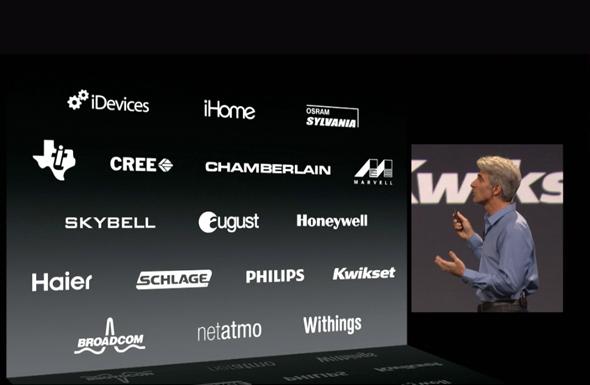If you look at the sea of logos in the photo above, it looks like Apple has assembled an impressive group of smart-home device manufacturers for its new HomeKit feature. And it has. For most companies, complying with an Apple standard or somehow being able to attach the Apple name is a boon to sales. But is it a comprehensive list of every single manufacturer that dabbles in Internet of things products? No. And that’s a problem.
It might sound like I’m being unreasonable. Apple is just taking one step to try to solve a larger industry problem. Currently smart-home devices like network connected thermostats, light bulbs, and door locks are all controlled by individual apps and protocols. The Internet of things has quickly become a tangled mess. With HomeKit, Apple is floating a solution that combines common protocols with things like secure pairing so Siri can control multiple smart-home devices, either individually or in groups. For a first step, this sounds pretty good!
But let’s go back to that top image. Right away one company’s absence jumps out: Nest. Nest’s smart smoke detectors and thermostats are a big part of what put smart-home devices on the map. Consumers might not be so excited about domestic gadgets were it not for Nest’s straightforward and appealing products. But, of course, Nest isn’t there, because Google acquired the company in January. And this highlights the problem with HomeKit.
It’s possible that Apple will actually be able to carry the day and eventually come to dominate smart-home standards enough to influence industry standards, but Google is going to try to keep that from happening. And other companies may challenge as well. At that point, what started as an effort to bring disparate products under one umbrella could devolve into fragmented ecosystems. HomeKit is throwing down, but it’s not over yet.
